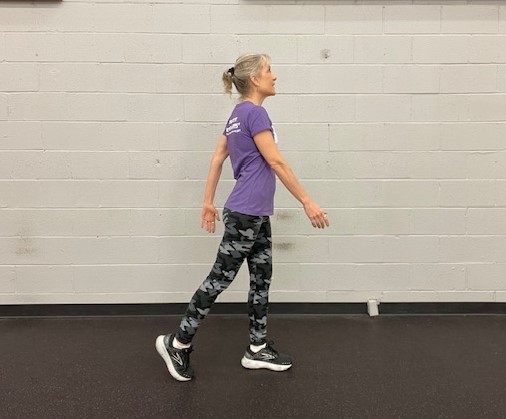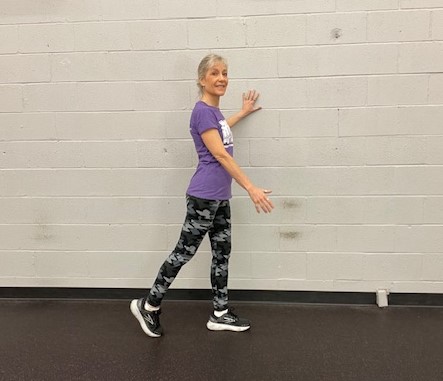
With Parkinson’s, muscles become imbalanced and stiff, causing a host of problems with gait and mobility. The front (anterior) of the body, which includes the chest, hip flexors, shoulders, and neck, gets stiff and tight. Meanwhile, the back (posterior) of the body—hamstrings, back, and glutes—becomes weak.
Most of our movement is in front of us, including walking forward. What if we were to walk backward? According to research, walking backward can have surprising benefits for both your body and your brain health.
Backward walking is a therapy I used with competitive athletes both for sport and rehab from injuries. It retrains your gait pattern, neurologically resets mechanics, and strengthens posterior muscles like the hard-to-turn-on glutes. Several studies suggest that backward walking can also positively affect cognitive abilities such as memory, reaction time, and problem-solving skills.
The biomechanics of walking backward is very different from walking forward. While a forward gait begins with heel contact, the backward gait begins with toe contact, and then the heel lowers to the ground. As a result, there is less impact at the knee joint, and different muscles are engaged compared to forward walking. Bonus: much like with backward crawling (yes, I make my fighters crawl backwards!), backward walking also works the brain.
Studies suggest backward walking affects the prefrontal cortex of the brain, which serves as the control center that mediates our highest cognitive abilities—concentration, planning, decision making, insight, judgment, and the ability to retrieve memories.
Benefits of backward walking include:
- Contra-lateral swinging of the arms and legs – promotes proper biomechanics
- Bigger arm swing range of motion, especially posteriorly (where there is usually a deficit)
- Extension of the shoulder – helps with stiffness to prevent frozen shoulder
- Promotes calf and hamstring flexibility for those tight leg muscles
- Helps lengthen and release tight hip flexors like the psoas
- Activation and strengthening of the lats (back muscles) and glutes, which tend to turn off when hip flexors are tight
- Strengthens back muscles, which means less pain, increased flexibility, and better posture
- Activation of the prefrontal cortex of the brain to improve cognition (executive functioning and memory)
- Improves reaction time for balance recovery when standing, turning, or walking
- Helps with knee osteoarthritis – backward walking takes pressure off of the knees
Watch this video to learn how to walk backward safely:
Follow these steps to try it:
** Warning: since you are moving backward, only people with the lowest risk of falls should try this alone. With Parkinson’s, sometimes it’s hard to judge where your body is in space.
If you are a beginner and nervous about walking backward:
- Find a wall where you can take at least 10 steps in a row.
- Hold on to the wall with one hand and begin walking backward. You may need someone to hold you or walk behind you.

- Turn around and walk backward to your starting point. Go slowly and maintain a forward gaze (don’t look at your feet).
- Repeat this four times.
If you are low-risk for falls, take it slow and I think you’ll find this exercise very rewarding!
💜 Coach Kimberly
Ready to take back your fight?
Contact me to get started in Kimberly Berg’s Rebel Fit Club Parkinson’s Boxing classes today. We have online workouts, too!
Subscribe now to get more tips and exercises for Parkinson’s delivered right to your inbox!